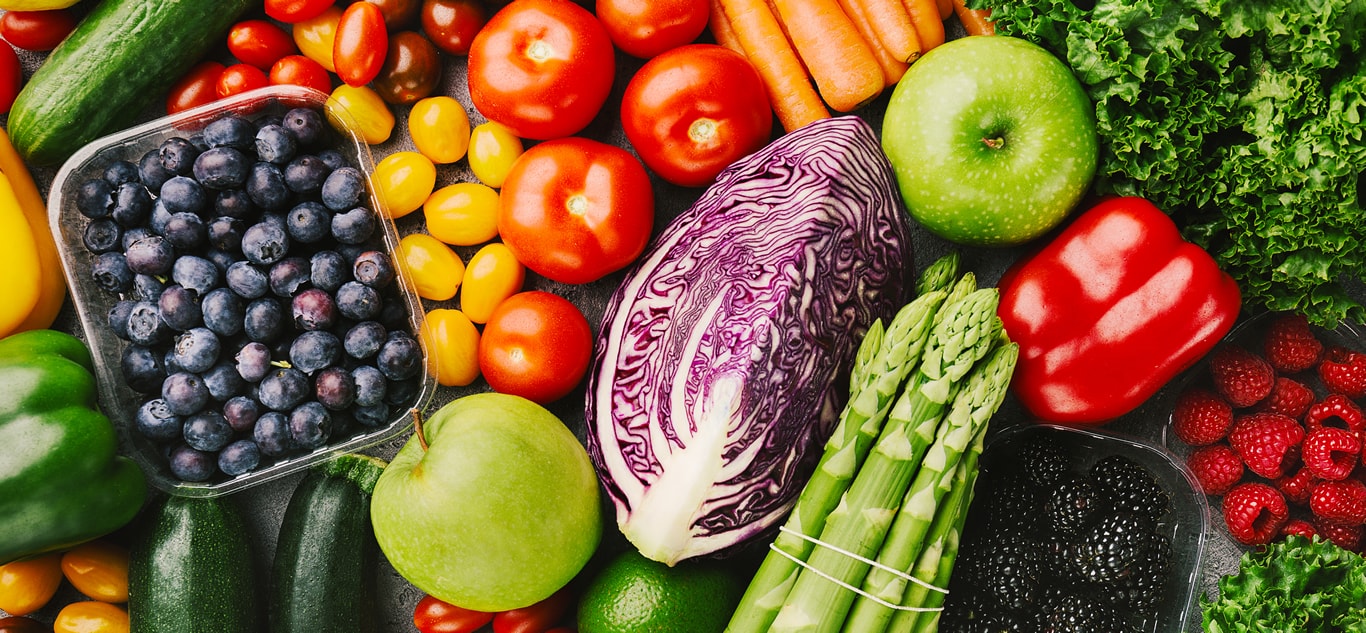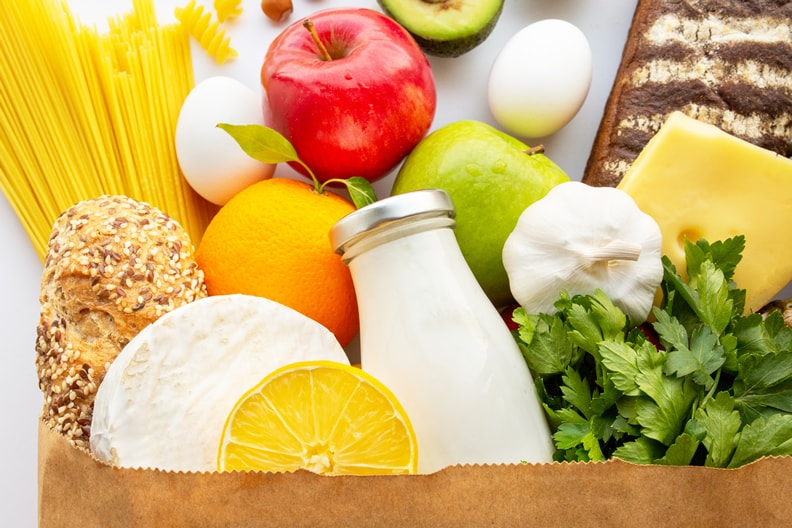
Determination of Nutrients

| Calculation of Carbohydrate and Energy Values by Atwater Method | FAO Food and Nutrition Paper 77-Food Energy- Methods of Analysis and Conversion Factors |
| Oil Determination | AOAC 2000.18 |
| Ash Determination | NMKL 173 |
| Starch Determination | Commission Regulation (EC) No 152/2009 Annex-III-L |
| Organic Acid Determination | AOAC 986.13 |
| Protein Determination | AOAC 986.13 |
| Salt Determination | TS 2812, TS 5000, TS 774, AOAC 935.47 |
| Dietary Fiber Determination |
| Cholesterol Determination |
| Mineral Tayini |
| Determination of Trans Fatty Acid Isomers |
| Determination of Fatty Acid Composition |
Energy values vary according to the types and amounts of nutrients such as carbohydrates, fats and proteins contained in foodstuffs. The Atwater Method uses a bomb calorimeter to measure the gross energy given off by the combustion of food. The metabolized energy of foodstuffs consumed with the Atwater method is precisely determined.
You can contact us for "Calculation of Energy Value" test procedures in foods.
Crude fiber is defined as the sum of the organic compounds remaining after crude protein, crude fat and non-nitrogenous extractives are subtracted from organic substances in the chemical analysis of plant foodstuffs. Crude fiber is mainly composed of plant carbohydrates such as indigestible lignin, cellulose and hemicellulose. Dietary fiber determination includes measurements of non-hydrolyzable polysaccharides that may occur with enzymes in human digestion of products.
The amount of fiber in foods; It is carried out in order to determine the nutritional quality, to determine the quality specifications of the raw material to be processed and some foods such as flour and to determine imitation - adulteration.
You can contact us for "Dietary Fiber Determination" in Foods.
Cholesterol is a steroid of animal origin. The human body needs cholesterol to make hormones, vitamin D and to digest food. However, too much of it in the blood is harmful. Cholesterol produced in the liver is also taken in through food. Especially foods of animal origin such as meat, dairy products and eggs contain cholesterol.
Cholesterol is a parameter that should be checked in food products, especially butter, margarine, sugar, biscuits, chocolate, full-fat cheeses, fat milk and yogurt, ice cream made with whole milk, cakes, sausage, fatty red meat, chicken wings and skin, salami and other dairy products, offal, all kinds of fried and all ready-to-eat foods.
You can contact us for "Cholesterol Determination" in Foods.
The definition of ash determination is the calculation of the inorganic residue remaining after the combustion of all organic parts of foodstuffs at high temperature. Inorganic residues obtained at the end of ash determination in foodstuffs refer to elements such as sulfates, phosphates, oxides, chlorides, silicates, K, Na, Ca, Mg and trace elements such as Fe, Cu, Zn, Mn, Al, As, I and F.
The amount of ash in foods; It is an important parameter in terms of determining the high mineral concentration that retards the growth of microorganisms, determining the nutritional values of foods and ensuring that they are supplemented if necessary. "Ash Determination" is carried out in various food products, spices and spice mixtures.
You can contact us for "Ash Determination" in Foods.
The mineral value of food products is important for their nutritional value. Minerals are naturally occurring, solid inorganic micronutrients. They play a role in the functioning, regulation, growth and development of the human body.
Minerals make up as little as 4% of the human body. However, it is effective on the regular functioning of the central nervous system and enzymes and bone structure.
The determination of mineral substances such as Sodium, Potassium, Calcium, Phosphorus, Magnesium, Iron, Copper, Zinc, Cobalt, Chromium, Nickel, Manganese, Selenium is especially important in the labeling stages of food products or in terms of verifying the values on the label.
You can contact us for "Mineral Determination" in Foods.
Starch is a product used to improve the structure of foods, reduce the viscosity of dough and increase gelatinization. Starch is formed in cereal products by the binding of amylose and amylopectins in the floury parts of cereal grains with glucose components. Starch obtained from cereals is named as corn starch, potato starch, rice starch and wheat starch, depending on the product from which it is obtained.
The amount of starch used in the food sector has been limited due to its conversion into sugar, excess calories and the risk of diabetes. While it negatively affects the quality of food, it is sometimes used to adulterate food products such as meat. For this reason, it is a parameter determined in the foodstuff.
"Starch Determination" is carried out on various foodstuffs, meat and meat products, cereals, pulses and products, canned vegetables.
You can contact us for "Starch Determination" in Foods.
Organic acids are organic compounds with acidic properties and are classified according to the foods in which they are found. Fumaric acid, lactic acid, acetic acid are organic acids formed as a result of fermentation, while ascorbic acid, citric acid and malic acid are classified as fruit acids.
Acidity in foods is also important for the formation of flavor balance and this makes it necessary to measure acidity.
Since the sugar/acid ratio in fruits is the most important factor in taste, the ripening of fruits is monitored in this way. The amount of acidity is a factor that affects the growth ability of microorganisms as well as affecting the taste.
The determination of organic acid in foods is carried out in confectionery, chewing gum, soft drinks.
You can contact us for "Organic Acid Determination" in Foods.
All foodstuffs of animal and plant origin contain protein. Compounds containing nitrogen in food are known as protein. Protein determination in foods is based on the determination of the amount of nitrogen. The amount of protein determined by the amount of nitrogen is called "crude protein amount".
Proteins are large molecule compounds formed by the combination of amino acids, which are building blocks. With 22 types of amino acids, there are an uncountable number of protein types in nature.
The reasons for determining the amount of protein in foods are as follows:
- Determining the conformity of food to existing quality standards
- Determining the nutritional value of food
- Determining the general composition of food
- Determining the price of food offered for sale
- Determining the processing technique to be applied to food
You can contact us for "Protein Determination" in Foods.
The formation of trans fatty acids results in a rigid molecule with different physical properties with higher melting point and thermodynamic stability. Trans fatty acids are formed by hydrogenation from fats of milk origin. Products such as margarines and shortening contain trans fats.
Chemically speaking, trans fats are not natural fats. In short, trans fats are solid fats obtained by hydrogenation of vegetable oils. Most trans fats are used in pre-packaged products, mass food production and bakeries. It is also analyzed as a quality parameter on many products.
"Determination of Trans Fatty Acid Isomers" is performed on vegetable fats and oils.
You can contact us for "Determination of Trans Fatty Acid Isomers" in Foods.
Salt is one of the substances used to increase the durability of food, to provide a protective effect by preventing the development of microorganisms and to add flavor.
Natural or added salt is present in foods in small or large amounts. Brine prepared from kitchen salt is used in the processing of many foods, especially in fermentation products such as pickles, feta cheese, ripening of olives and the production of canned vegetables.
The amount of salt added to foods during processing is limited in the relevant product communiqués of the Turkish Food Codex according to the type and processing method of the food. Salt in foods is chemically present in the form of sodium chloride (NaCl). Salt determination is an important parameter for determining the levels in processed foods and controlling quality.
You can contact us for "Salt Determination" in Foods.
Fats and oils are compounds based on triglycerides, which are composed of glycerol and fatty acids. Fats are the energy source that provides the most energy per unit weight, which is necessary for all living organisms to continue their existence.
Factors affecting the quality of the oil are feeding, technology and processing values, the distribution and position of fatty acids in the oil. The composition of fatty acids is not constant. Generally, morphological, physiological and genetic factors affect the composition of fatty acids.
The fatty acid compositions of oils are given in the Turkish Food Codex Communiqué on Oils Called by Plant Name (Communiqué No: 2012/29) and the Turkish Food Codex Communiqué on Methods of Analysis of Olive Oil and Olive Pomace Oil (Communiqué No: 2014/53) issued by the Ministry of Food, Agriculture and Livestock on the basis of fatty acid composition and percentage of total fatty acids.
Monounsaturated fatty acids, polyunsaturated fatty acids and saturated fatty acids are determined within the scope of fatty acid composition analysis. Saturated fatty acids, which must be indicated on the label, are an important parameter.
"Determination of Fatty Acid Composition" is carried out on animal and vegetable fats and oils.
You can contact us for "Determination of Fatty Acid Composition" in Foods.
Organic compounds formed by the combination of glycerin with fatty acids are called fats. Fats are extremely effective not only in terms of nutrition but also on the sensory quality of food. When fat analysis is performed, the process is also called crude fat analysis or lipid analysis, since all fat-like compounds soluble in fat are determined together with fat.
The reasons for the determination of fat in foods;
- Fat amounts are an indicator of maturity in some fruits and vegetables.
- The amount of fat in some food products such as oilseeds and dairy products is important in determining the commercial value.
- It plays an important role in determining the shelf life of foods.
- Fat determination is important for determining the general composition of foods and determining compliance with standards.
- It is important in terms of ensuring the amount of fat on the food label.
- It is analyzed in terms of determining imitation or adulteration in processed foods.
"Fat Determination" is carried out on various foods, milk and dairy products.
You can contact us for "Fat Determination" in Foods.